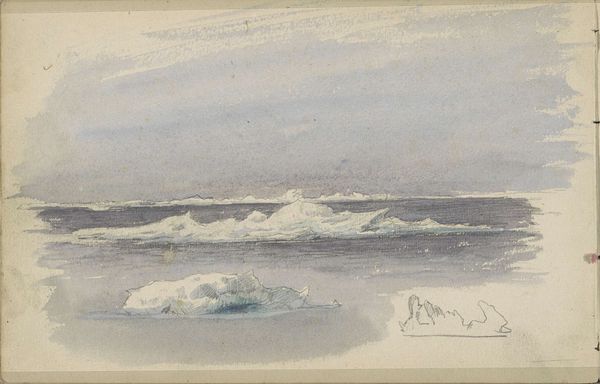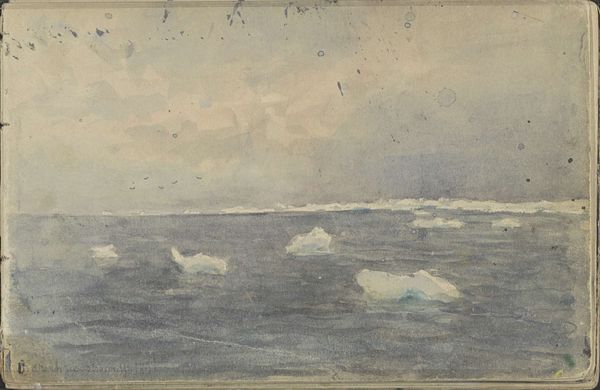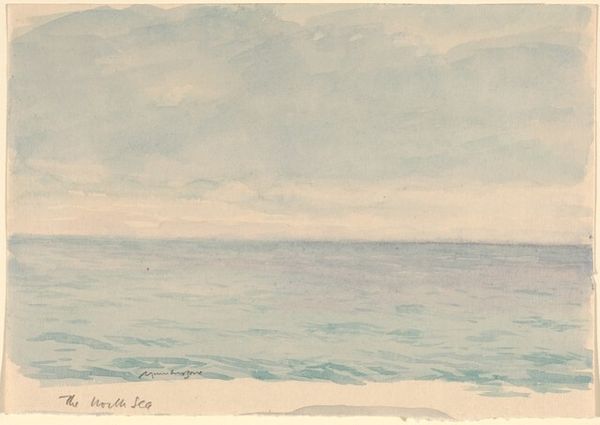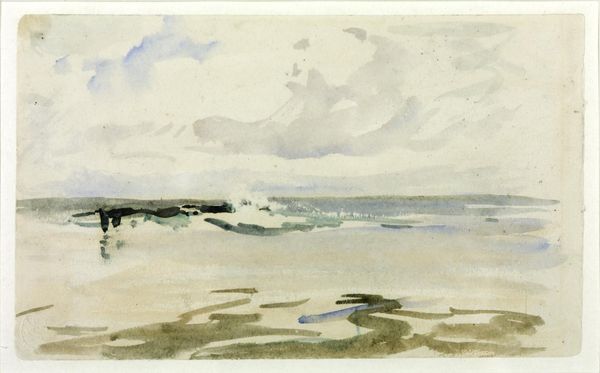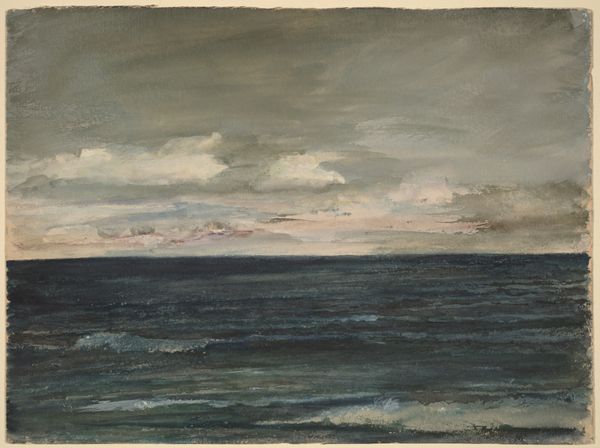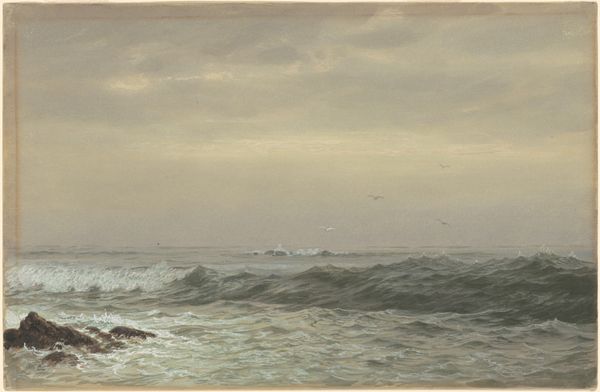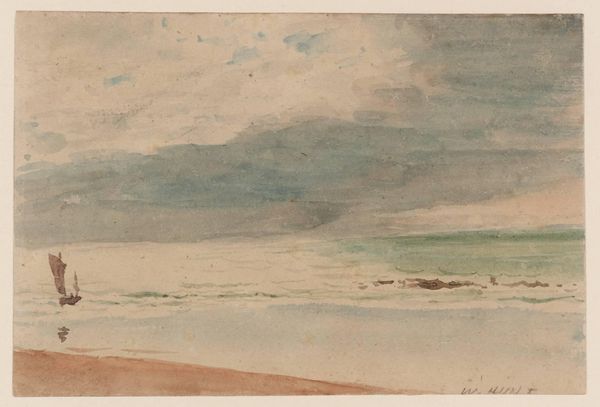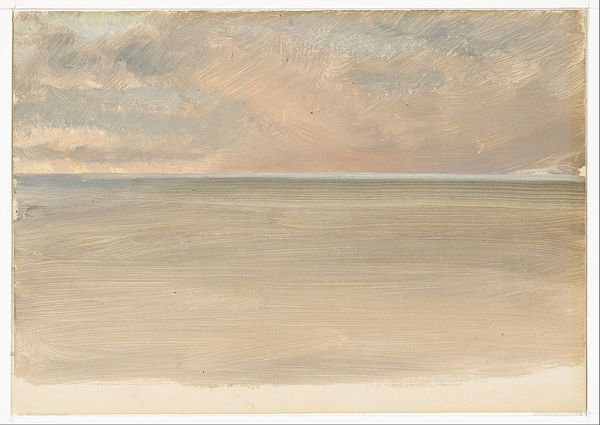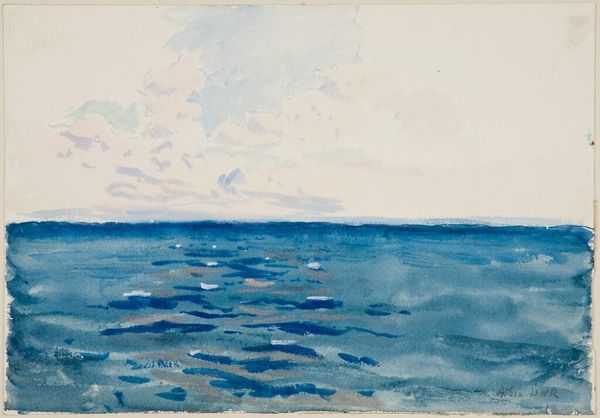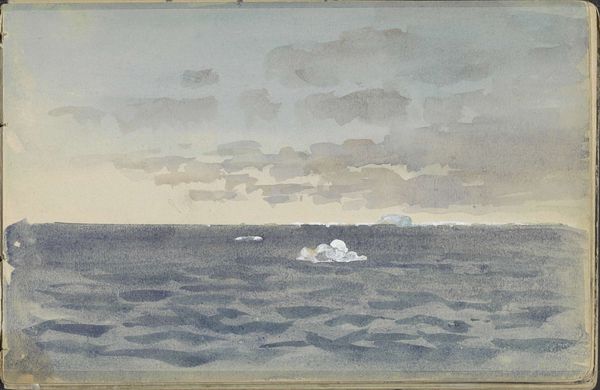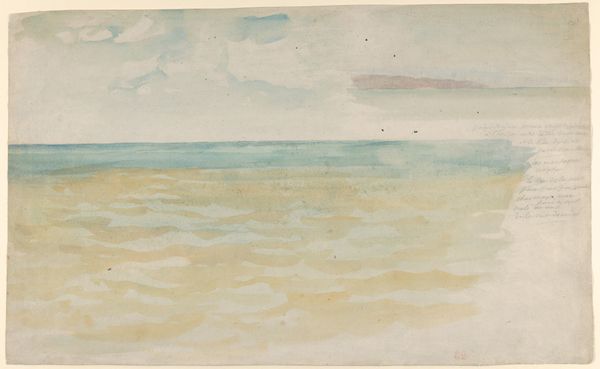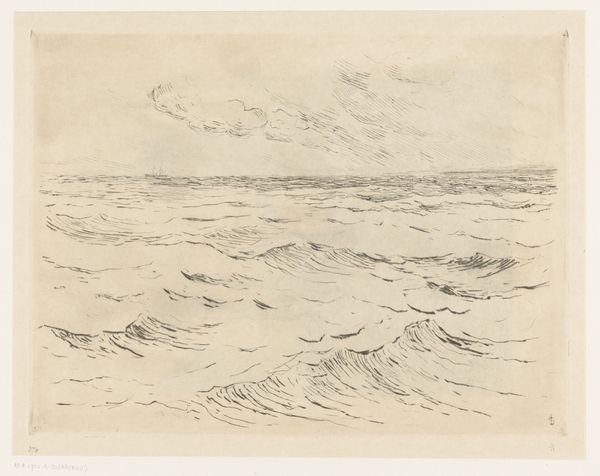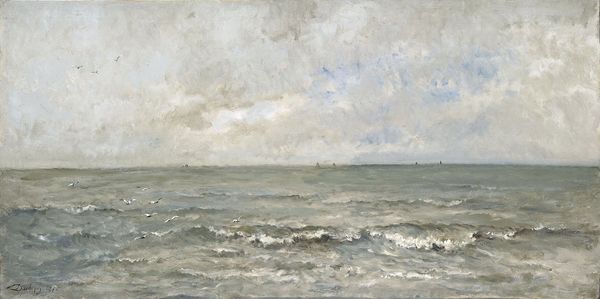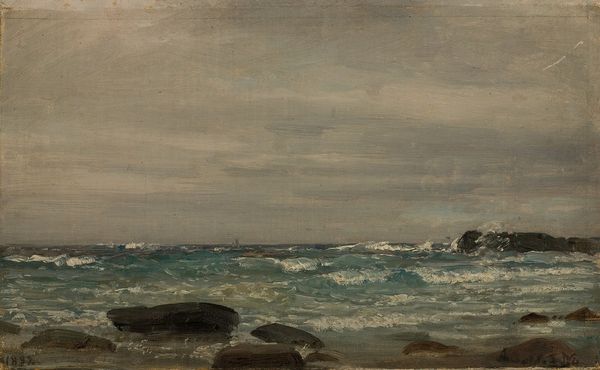
watercolor
#
impressionism
#
landscape
#
watercolor
#
watercolor
#
realism
Copyright: Rijks Museum: Open Domain
Curator: This delicate watercolor is titled "View of the Barents Sea with Ice Floes" by Louis Apol, painted around 1880. It's currently held at the Rijksmuseum. Editor: It strikes me as very bleak, almost minimalist. The palette is incredibly muted; it conveys a sense of profound isolation. The stark contrast between the icy whites and somber blues almost has an abstract quality. Curator: The use of watercolor lends itself to this sense of ethereal vastness. Watercolors, like memory, are fluid and unfixed. Here, they depict the harsh Arctic, a place laden with symbolic weight for nineteenth-century explorers and even now when thinking about environmental change. Editor: Yes, Apol really captured the essence of the scene, relying on washes of tone and careful detailing of texture. Notice the layering effect, the subtle gradations that add depth. The formal composition—that high horizon line, dividing sea and sky almost equally—emphasizes the scene's horizontality. Curator: Exactly, it reflects an explorer's viewpoint. It reminds us that encounters with this sort of arctic scene throughout the nineteenth century sparked both scientific advancement and terrifying anxieties. Early explorers interpreted the landscape's barrenness through concepts of sublimity; ice could represent existential fears of being lost at the edge of the world. Apol presents these frozen expanses with more realism, allowing these feelings to creep in. Editor: True. This lack of embellishment seems almost radical in its quietude. Apol distills the landscape to its barest essentials—a structural decision to focus our gaze, inviting a different kind of encounter. Curator: One could read those ice floes, adrift in the sea, as powerful symbols of a constantly changing environment, which in the end impacts every living thing, from the tiniest microbes to humanity itself. This makes the piece very impactful for today's audience. Editor: It is, undeniably, a powerful and rather beautifully articulated piece in its simplicity. Curator: It resonates with both history and visual precision.
Comments
No comments
Be the first to comment and join the conversation on the ultimate creative platform.
